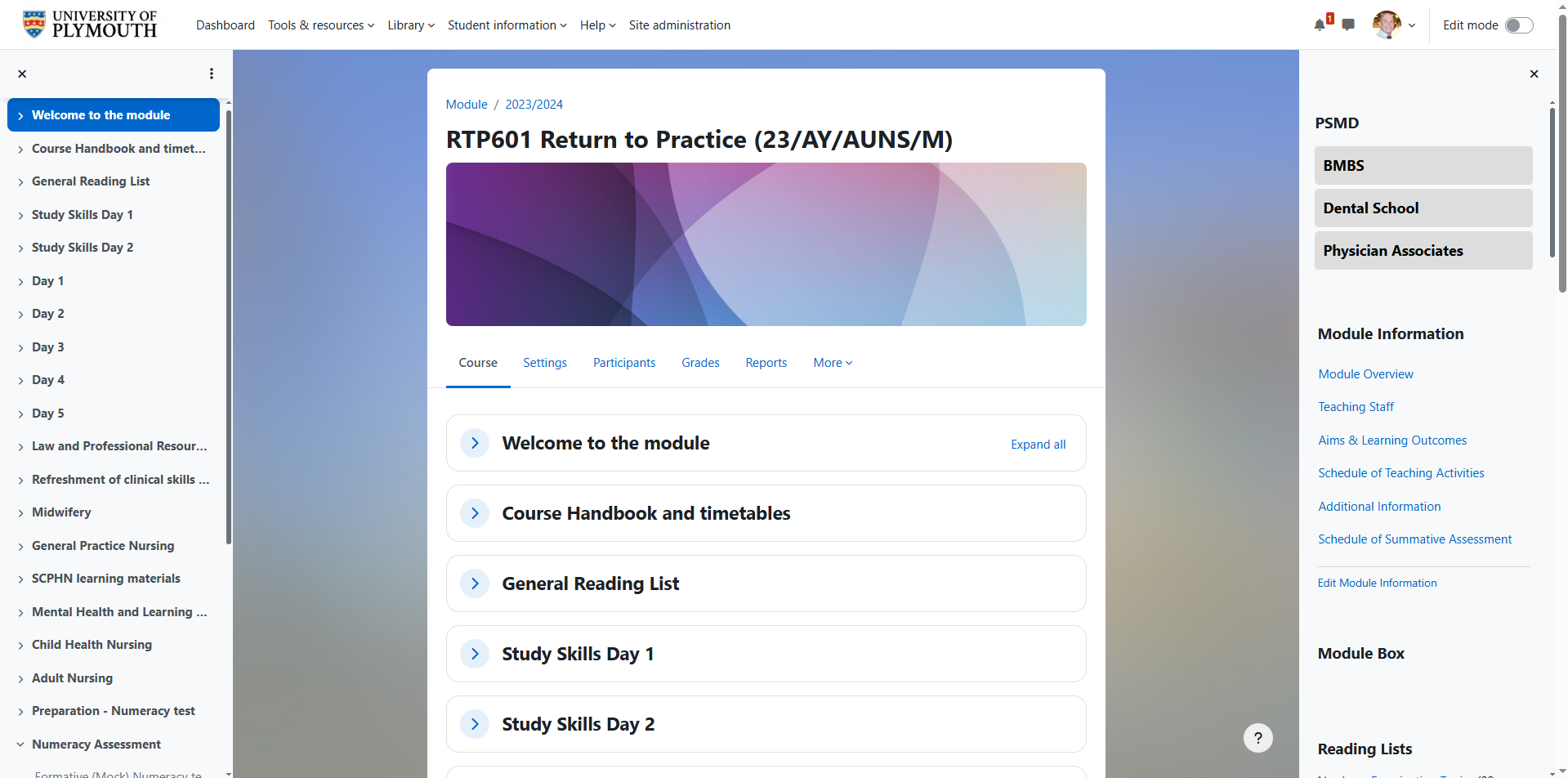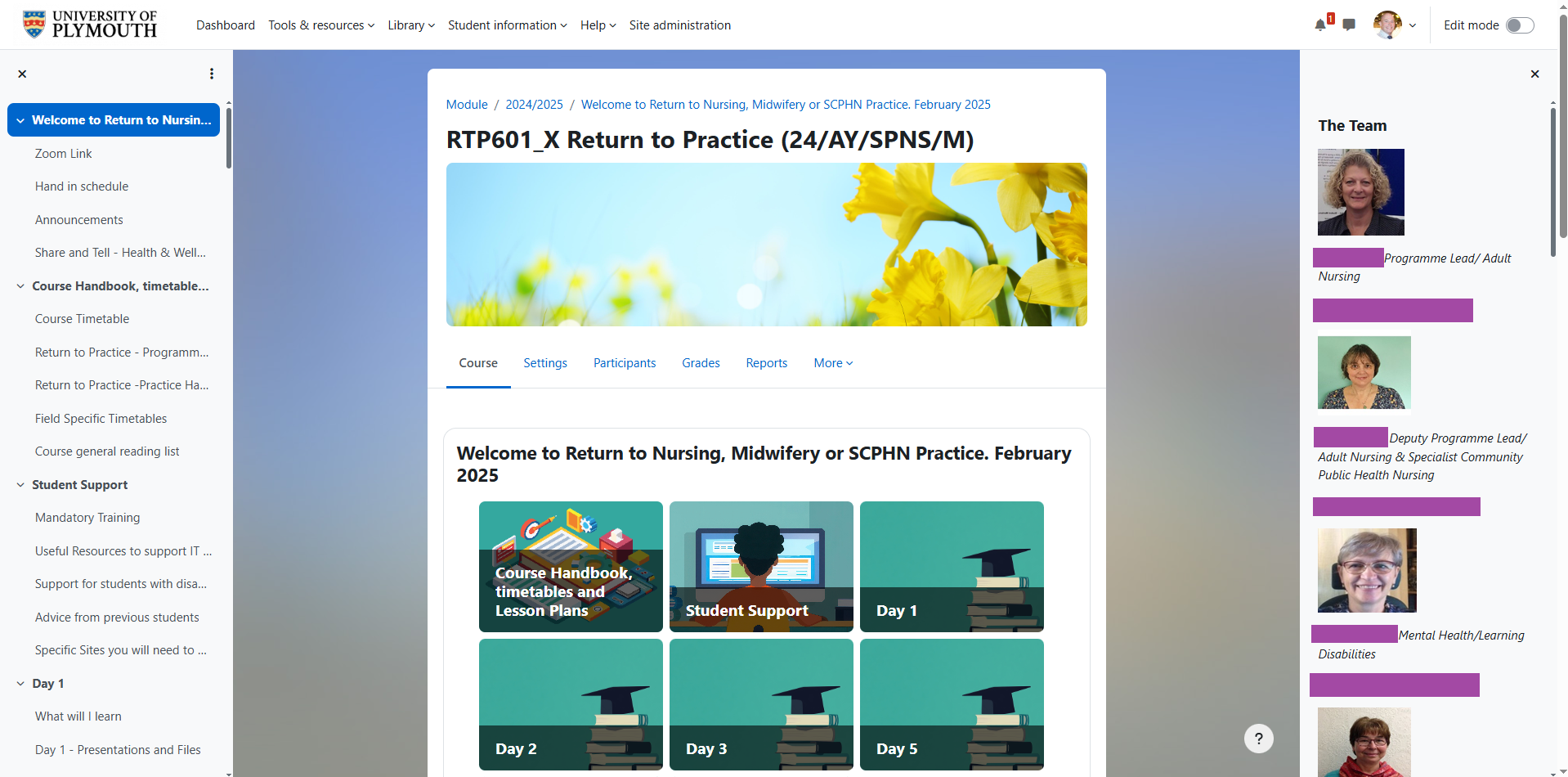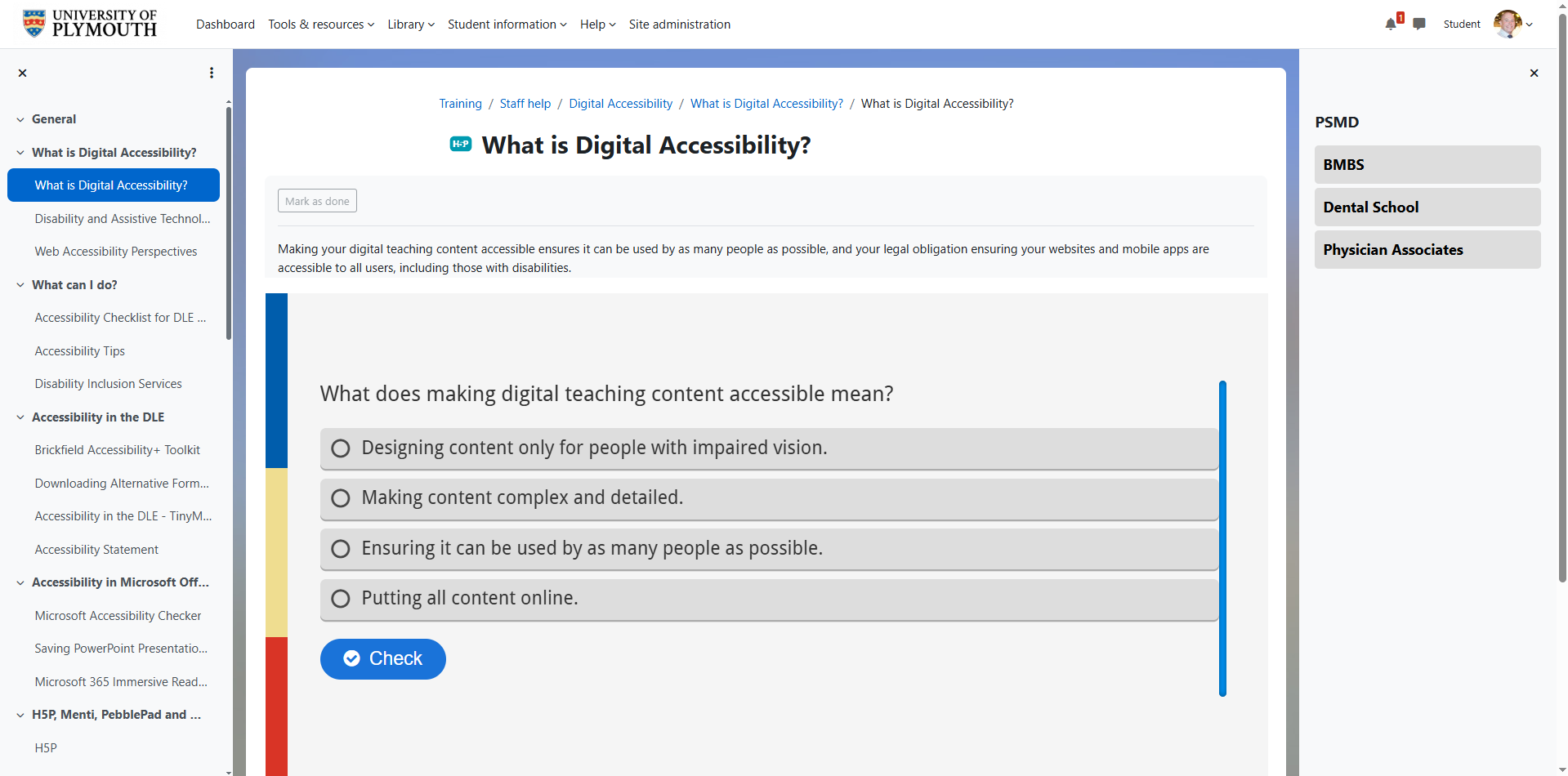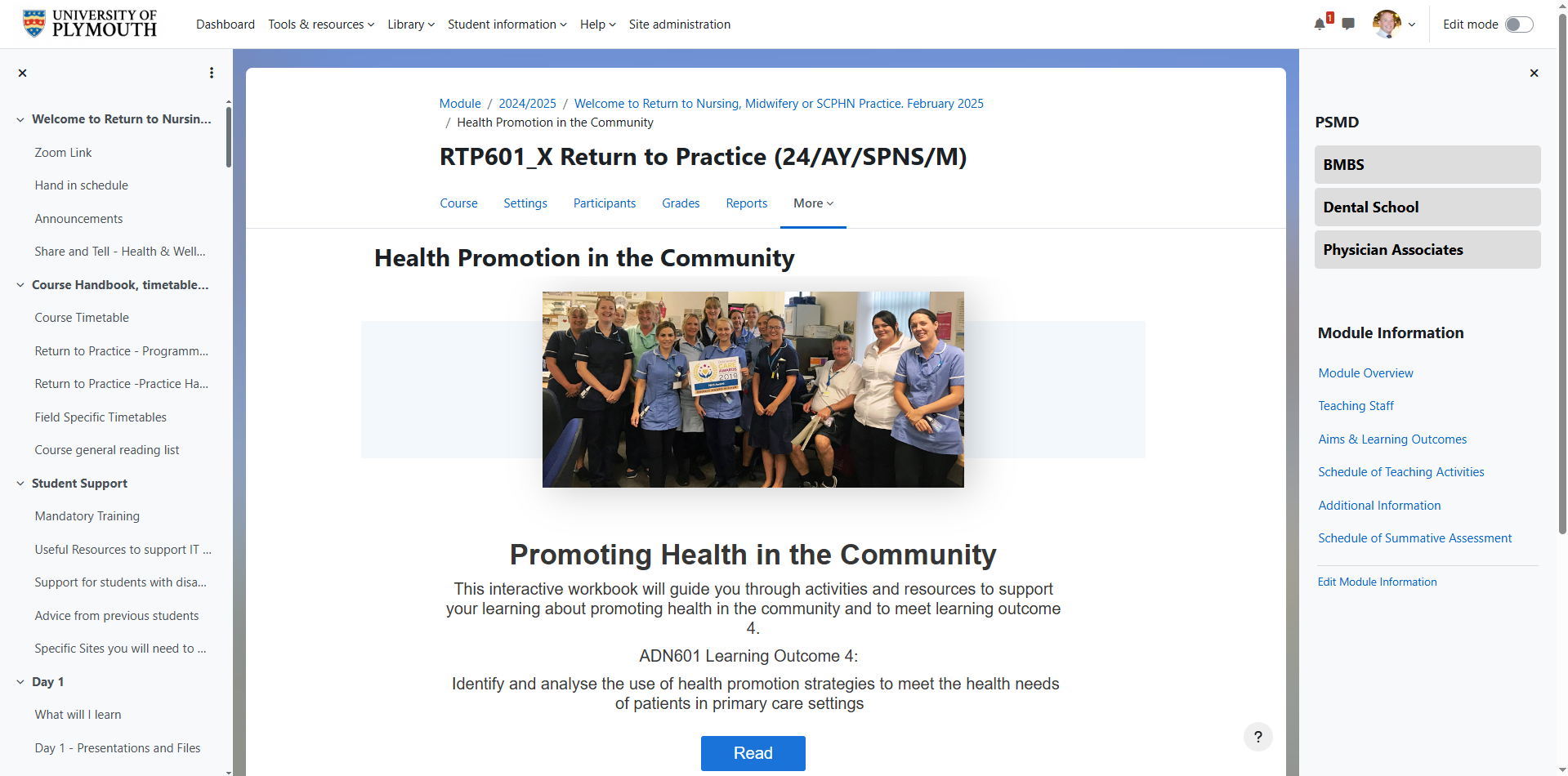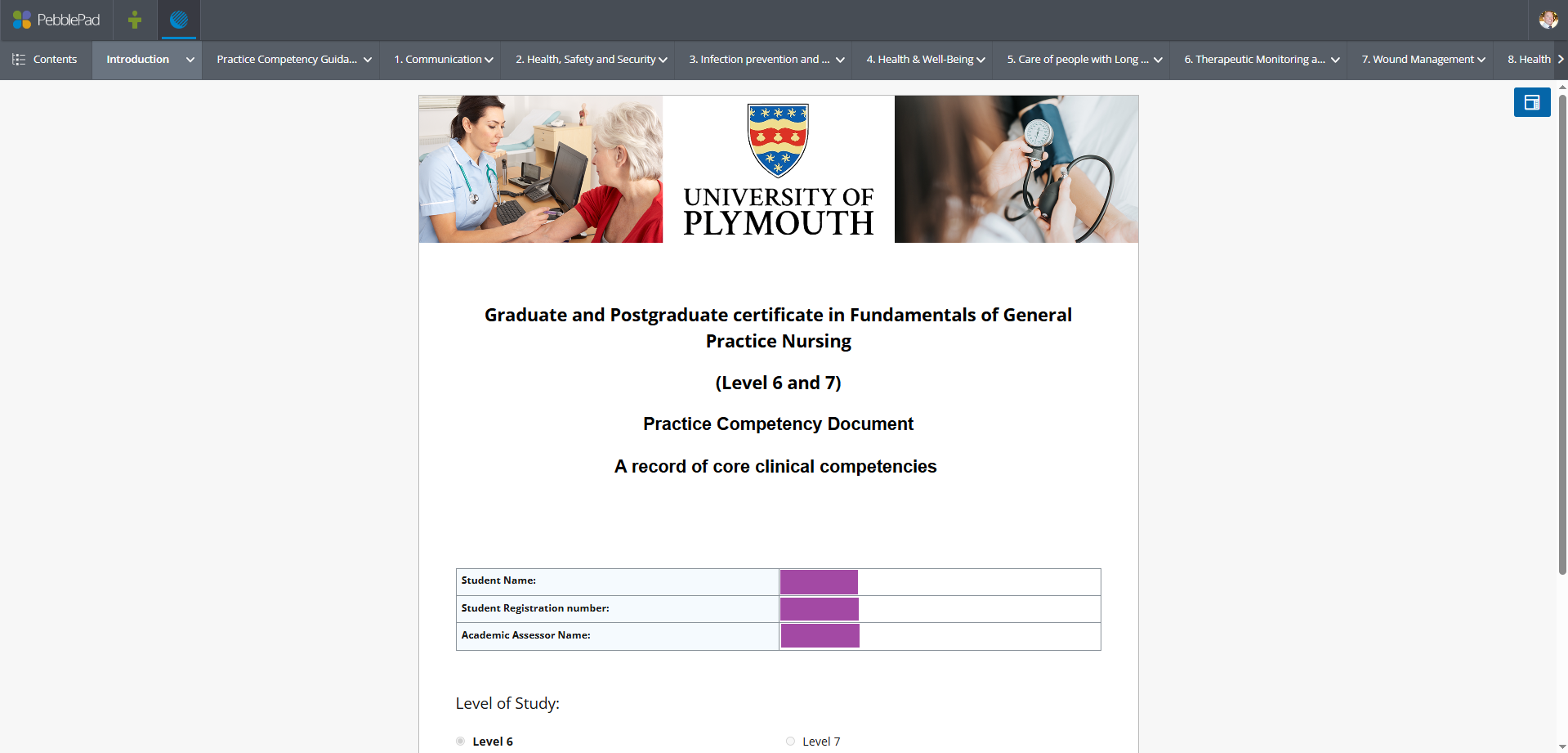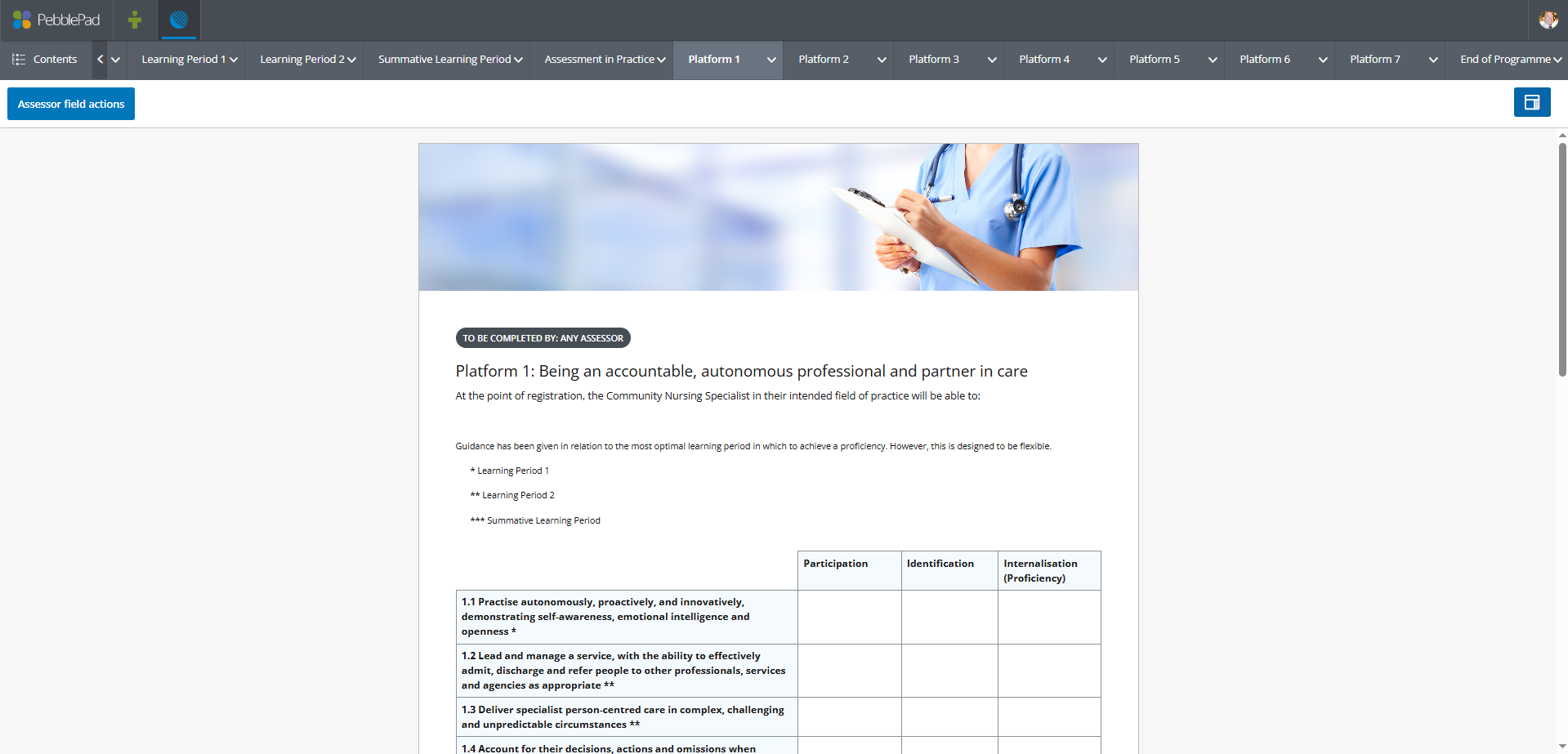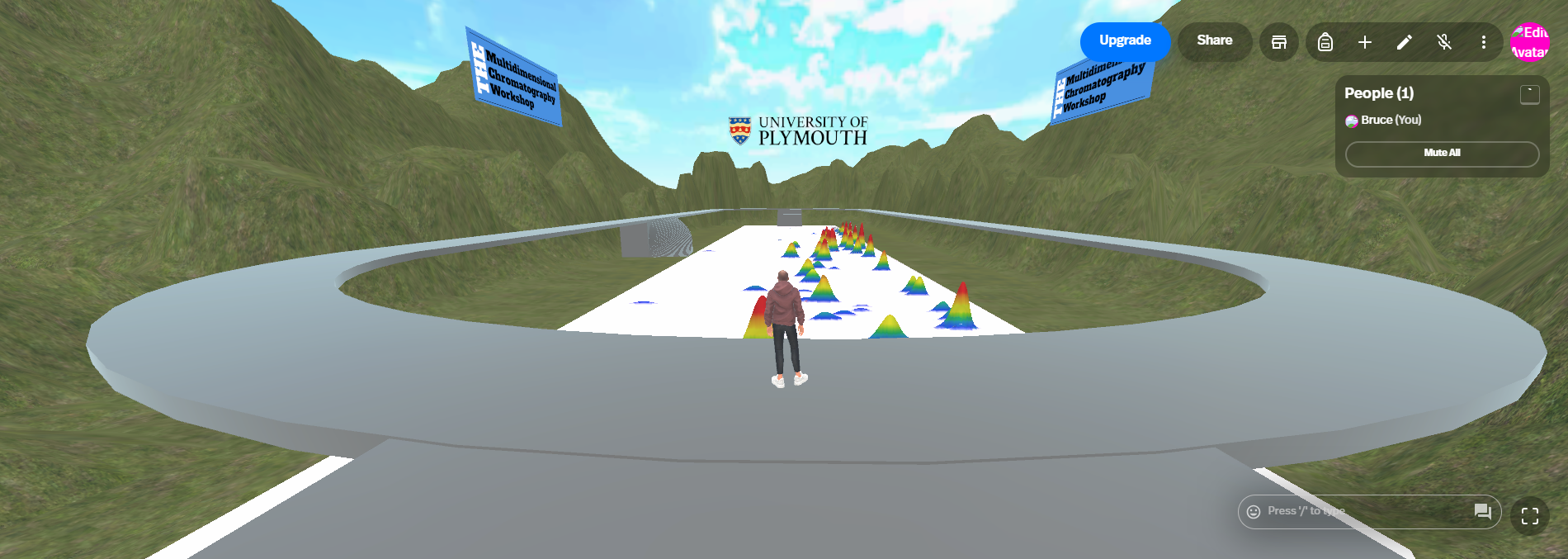Technical knowledge and ability in the use of learning technology
You should show that you have used a range of learning technologies. These might include web pages, Virtual Learning Environments, Computer-Aided Assessment, blogs, wikis, mobile technology, e-books, programming languages and so on. It is important to make it clear how the technology you discuss is being used for learning and/or teaching. Evidence might include copies of certificates (originals not needed) from relevant training courses, screenshots of your work, a note from academic or support staff who have worked with you or, if appropriate, confirmation that the work is your own from your line manager.
CMALT Guidance 2019
Description
I support academic staff across all faculties in the effective use of learning technologies. Our central platform is Moodle, the university’s Learning Management System, and I work closely with teaching teams to improve course structure, design engaging learning activities, and ensuring digital accessibility 🔴CP1. My role also extends into pedagogical design, particularly around online assessment, formative feedback, and embedding interactivity to support student engagement 🔴CP1.
In addition to Moodle, I work with a wide range of tools that integrate with or complement our digital learning ecosystem. These span video, collaboration, interactivity, ePortfolios, immersive content, and creative design 🟡CP2. The table below provides an overview of the key technologies I use and how they support learning and teaching:
Summary of Key Learning Technologies
| Tool / Platform | Purpose / Description | How I Use It in Learning & Teaching |
| Moodle | Learning Management System (LMS) used across the university | Support course design, embed tools, assessments, improve accessibility and navigation. |
| Panopto | Lecture capture and video hosting tool | Embed videos in Moodle, support asynchronous learning and revision |
| H5P | Interactive content creation platform | Designing learning activities, scenarios, and knowledge checks within Moodle |
| Mentimeter | Live engagement and polling tool | Increase student interaction in lectures, tutorials, and workshops |
| Microsoft Office 365 | Productivity suite (Word, Excel, PowerPoint, Whiteboard) | Support resource creation, design workshops, and structure learning materials |
| Microsoft Outlook | Email and calendar platform | Manage support via the Digital Education inbox; provide structured responses and follow-ups to staff messages |
| Zoom / Microsoft Teams | Virtual meeting and teaching platforms | Deliver live training, offer 1:1 support, and run collaborative sessions |
| Miro | Online collaborative whiteboard | Facilitate idea generation, workshop planning, and interactive synchronous sessions |
| Camtasia / Adobe Premiere Pro | Video editing and screen capture tools | Create support videos, explainers, training materials, and walkthroughs |
| Adobe Photoshop | Graphic design tools | Design visuals to support digital learning |
| PebblePad | ePortfolio platform used for reflective and competency-based learning | Support workbook design, reflection spaces, staff feedback, and external assessor access |
| 3DVista / Insta360 Studio | Tools for 360° tour for spatial learning and 360° video content creation. | Create immersive learning environments and simulate real-world contexts (e.g. Devon Air Ambulance) |
| Adobe Aero | AR design tools | Explore augmented reality applications in digital learning |
| Spatial.io / EngageVR | VR Metaverses | Spatial learning opportunities for teaching in Virtual Reality metaverses. |
| Unity / Blender | 3D and VR development tools (CPD in progress) | Exploring VR prototypes and spatial learning opportunities in teaching contexts |
This ecosystem enables me to offer tailored, context-sensitive advice to academics depending on the subject area, their pedagogical aim, and their digital confidence 🟢CP3. While tools like PebblePad are important in specific areas (e.g. health and education), tools like Moodle, H5P, and Panopto are used across the university, and I support staff in choosing the right mix of platforms and tools to enhance teaching effectiveness and student experience 🔵CP4.
Reflection
Working across a wide variety of technologies has taught me to think critically about their purpose, usability, and how they align with both pedagogical goals and the realities of day-to-day academic work 🔴CP1. In my role, I frequently support staff in using Moodle more effectively—not just for uploading content or managing assessment, but in course and site design, ensuring that layouts are intuitive, consistent, and accessible 🟢CP3. Even small improvements, like restructuring topics or using labels and banners to guide learners, can have a big impact on engagement and clarity.
Much of my academic support is initiated via the Digital Education inbox, managed through Microsoft Outlook. Academics can email us directly with questions or requests for support, and I respond with tailored guidance, links to resources, or walkthroughs 🟢CP3. This system helps streamline communication and ensures a timely and consistent response across faculties. It also gives us insight into recurring support themes, which can inform future training or guidance materials 🔵CP4.
In addition to email-based support, I run live sessions via Zoom and Microsoft Teams, both one-to-one and in small groups. These often include walkthroughs of tools, troubleshooting issues, or offering advice on how to structure a digital activity more effectively. I find that one-to-one and small group conversations often lead to meaningful changes in practice, especially when staff have the chance to reflect and ask questions in a relaxed, supported environment 🟢CP3.
I assist with specific tools like Turnitin (e.g. helping setting up rubrics or using Feedback Studio), my role is broader than tool support alone 🔴CP1 & 🔵CP4. It’s about helping staff understand how digital tools can enhance learning, providing high quality efficient feedback and making content more accessible and engaging for students.
With tools like PebblePad, I’ve been able to support structured reflective learning by helping translate competency frameworks into interactive, digital formats. These projects have shown me the value of technologies that enable ongoing feedback and visibility, not just at the point of submission, but throughout a learner’s journey 🔴CP1.
Finally, I continue to explore emerging areas like immersive learning, and I see huge potential in spatial tools like 3DVista for experiential and scenario-based learning. These technologies open up new ways to engage students beyond the traditional VLE structure and align well with my interest in future-facing approaches to digital education 🟡CP2.
Evidence
Moodle
Development of Moodle Site
Working with academics on the Return to Practice Nursing and Midwifery programme to redesign their programme site.
Feedback from staff and students showed that the site had previously been a repository with lots of information, however this information was unstructured and confusing to its’ relevance.
The redesign worked with this to provide a structure that students understood what would be delivered and also academics expectations of student engagement.
H5P
H5P learning resources
I have created H5P objects to enhance learner engagement within Moodle, with the example above being within the Digital Accessibility Course.
I have also delivered training for academic staff, enabling them to develop their own interactive H5P content, which can be seen above the with the H5P object within Return to Practice.
PebblePad
PebblePad
Above are screenshot demonstrated proficiency in the creation and customisation of PebblePad portfolios, showcasing the integration of assessment rubrics for competency mapping.
Camtasia & Adobe Premiere Pro
Instructional videos with Camtasia and Adobe Premiere Pro
I have produced instructional videos using both Camtasia and Adobe Premiere Pro, demonstrating my ability to use a range of video editing tools to create clear, engaging learning content. These include screen recordings as well as more advanced edited footage for professional delivery.
Immersive Education – Virtual Tours
3dVista
As part of my work in immersive education, I created 360° virtual tours using 3DVista. This included the Devon Air Ambulance Trust for Paramedic Science students, providing an interactive exploration of the air ambulance headquarters.
Immersive Education – Virtual Worlds
Unity & Spatial
I have created virtual worlds in Unity and hosted within Spatial.io, to support learners to visualise large data. The above example is of a chromatogram, that was produced for University of Plymouth Chemistry department to demostrated at the 16th Multidimensional Chromatography Workshop in Liège, Belgium.
To view the virtual world please click the picture or this link to open the virtual world – UoP Chromatogram (opens in new tab)
Core Principle Values
🔴CP1: A commitment to exploring and understanding the interplay between technology and learning.
🟡CP2: A commitment to keep up to date with new technologies.
🟢CP3: An empathy with and willingness to learn from colleagues from different backgrounds and specialist areas.
🔵CP4: A commitment to communicate and disseminate effective practice.
